Goa Forts allow visitors to explore the region’s rich historical heritage. These towering forts, initially erected by the Portuguese to guard against invasions, have become famous icons, offering stunning vistas and fascinating history. Exploring the forts in Goa shows not just military architecture, but also intriguing stories of colonial control and defense methods that influenced the state’s history. From huge walls to underground passageways, each fort provides a distinct view of the past, immersing visitors in both history and nature. Whether you are a history enthusiast or a casual visitor, these forts are a must-see for anybody visiting Goa.
10 Must-Visit Goa Forts
Goa combines a rich history with stunning coastal landscapes. Here are the top 10 forts in Goa to visit and explore:
1. Aguada Fort
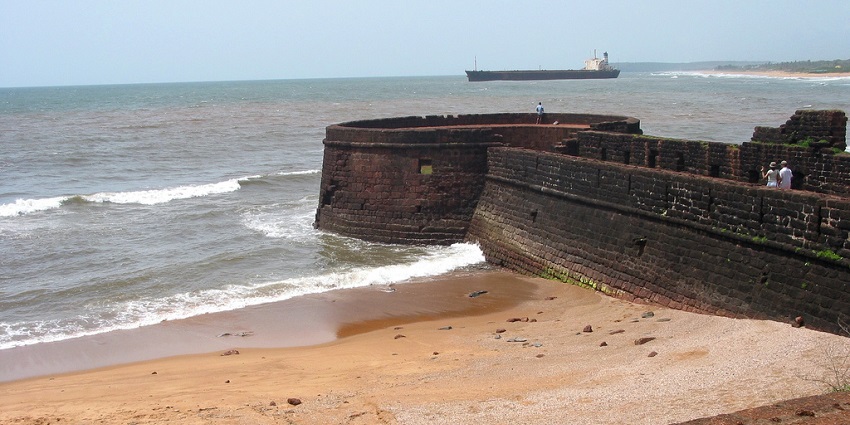
Photo: Nanasur / Wikimedia Commons
Aguada Fort, erected in the 17th century, is one of the best forts in Goa and is well-preserved. It overlooks the Arabian Sea and functions as a fortress against hostile ships. The fort’s lighthouse, called Aguada lighthouse was built in 1864, and provides a panoramic view of the environs, making it a must-see for both history aficionados and nature lovers. A freshwater spring within the fort supplied water to the ships that would stop by. This is the origin of the fort’s Portuguese name, “Aguada,” which translates to “watery.” Ships would often stop by to replenish their freshwater supplies with crews.
Location: Sinquerim Beach
Timings: 9:30 AM – 6 PM
Entry Fee: N/A
Suggested Read: Explore Places To Visit Near Aguada Fort For Stunning Views, History, Beaches & Hidden Gems
2. Chapora Fort
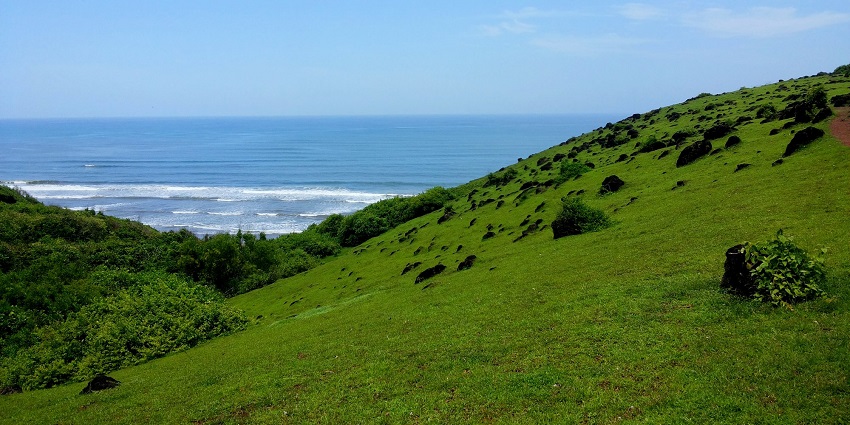
Photo: Gayatri Priyadarshini / Wikimedia Commons
Chapora Fort, a popular location in Bollywood films, is positioned on a hill overlooking Vagator Beach. The Portuguese built it in 1617 to guard against Maratha incursions. The fort’s damaged walls make a lovely setting for sunset views and photography. The Chapora Fort occupies a high position with views in all directions. It also features steep hills on all sides. The top slopes’ outlines are followed by the fort. The Fort of Chapora, now a prominent tourist destination in Goa, gained popularity thanks to the Amir Khan, Saif Ali Khan, and Akshaye Khanna film Dil Chahta Hai. It is one of the popular forts in Goa, attracting a large crowd.
Location: Vagator Beach
Timings: 9:30 AM – 6 PM
Entry Fee: N/A
3. Reis Magos Fort
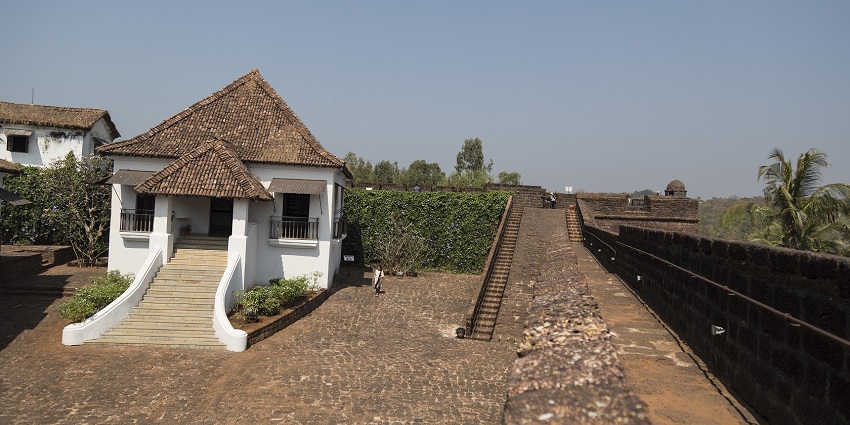
Photo: Prajakt Kamulkar / Wikimedia Commons
This fort, enclosed by stout laterite walls studded with distinctive Portuguese turrets, was built in 1551. It was later expanded on many occasions and eventually re-erected in 1707. It lost its protective purpose and was used as a prison beginning in 1900, before being abandoned in 1993, when it was left to the elements and began to disintegrate. The government of Goa began restoration work on the fort in 2008. Gerard da Cunha, a renowned architect, was contracted to renovate the fort. In addition to serving as a tourist attraction, the fort has been turned into a cultural institution.
Location: Reis Magos Road
Timings: 9:30 AM – 5 PM (Closed on Mondays)
Entry Fee: ₹50
Suggested Read: Reis Magos Fort
4. Cabo De Rama Fort
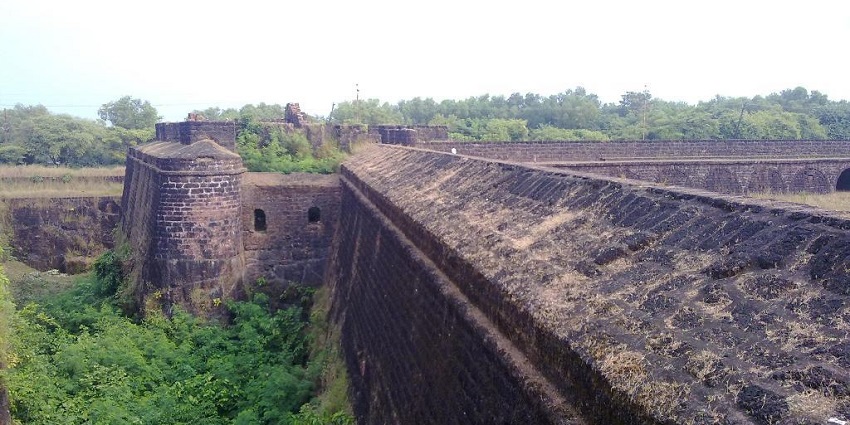
Photo: Abhijit Nandi / Wikimedia Commons / Image For Representation Only
Cabo de Rama Fort, known for its relationship with the Ramayana, combines history and myth. This fort, which overlooks the Arabian Sea, served as a bastion for monarchs ranging from Hindu kings to Portuguese. In the 1760s, the Portuguese took possession of Cabo de Rama after the Raja of Soonda relinquished his kingdom in exchange for protection from Hyder Ali of Mysore. This fort is now in partial ruins, although it remains a famous tourist destination in Goa. Inside Cabo de Rama lies the Capela de Santo António, a church that is still in use.
Location: Cabo de Rama Beach
Timings: 9 AM – 5:30 PM
Entry Fee: N/A
5. Tiracol Fort
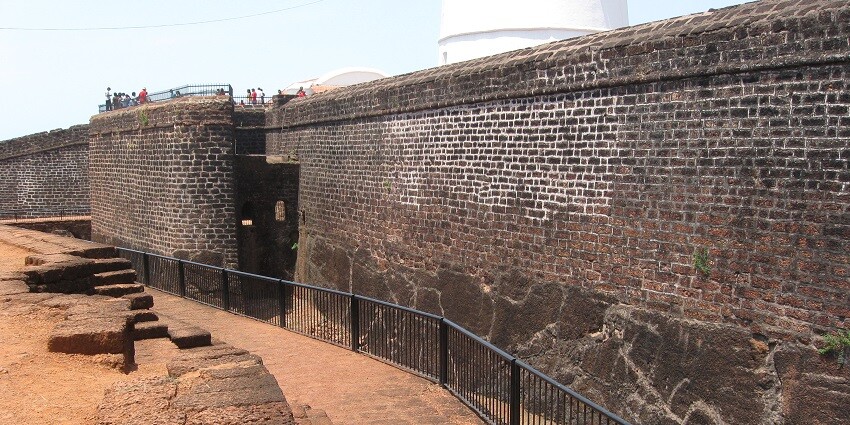
Photo: AaronC’s Photos / Wikimedia Commons / Image For Representation Only
Fort Santíssima Trindade, commonly known as Fort Tiracol, is a Portuguese fort near the settlement of Tiracol. Fort Tiracol was a symbolic spot where Goan independence warriors held occasional demonstrations. In 1954, Satyagrahis protesting entered Goa from the north to Fort Tiracol and flew the Indian flag for a day until they were apprehended and imprisoned. The hotel’s high location offers breathtaking views of the Arabian Sea and the whole village of Terekhol, as well as sufficient seclusion from the usual throng. The hotel provides history tours, guided beach yoga, fishing expeditions, and a variety of other activities for in-house guests.
Location: Terekhol River
Timings: 9 AM – 6 PM
Entry Fee: N/A
Suggested Read: Ponda Fort
6. Rachol Fort
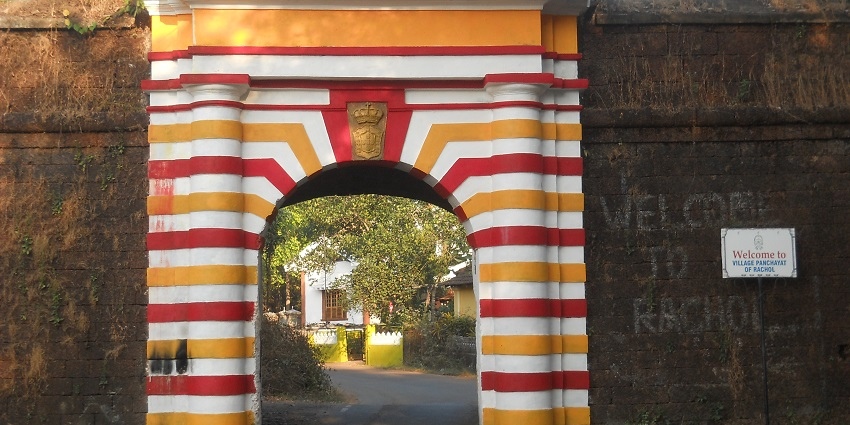
Photo: Melissadaine / Wikimedia Commons
Rachol Fort may not be as well-known, but its strategic importance during the Portuguese era cannot be denied. This little fort provides a tranquil location amid lush flora and views of the Zuari River. The fort’s cannons were eventually transferred to other forts, and it was no longer used as a military position. This fort is today substantially destroyed, although the ancient gate of arms, topped with the Portuguese monarchy’s coat of arms, and certain parts of the walls and moat remain. Since 1983, the governments of Goa, Daman, and Diu have safeguarded the gate as a monument.
Location: Rachel
Timings: 9 AM – 5:30 PM
Entry Fee: N/A
7. Corjuem Fort
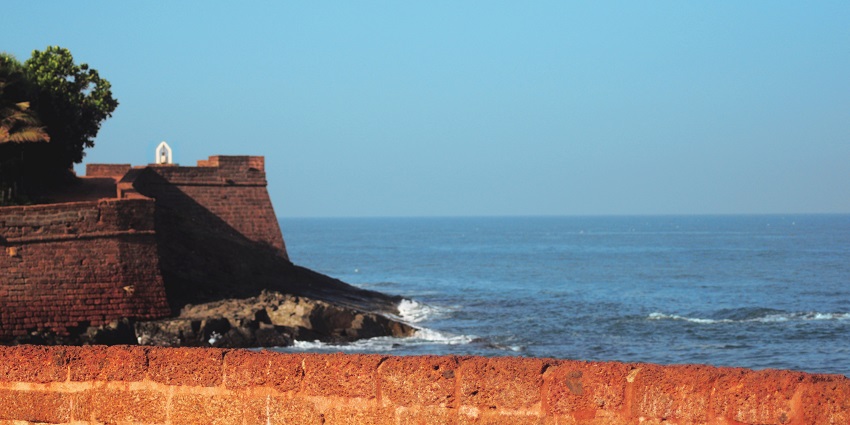
Photo: Mridul1618 / Wikimedia Commons / Image For Representation Only
The Fort of Corjuem (Portuguese: Forte de Corjuem) is located on the island of the same name in Bardez, to the east of the settlement of Aldona. In the early 1800s, the fort served as a military school, with a battery of four cannons for protection. The fortification fortified Corjuem and houses a chapel beneath the parish church of Aldona. Corjuem Fort was built in the 18th century and is one of Goa’s few inland forts. Although modest, it provides magnificent views of the surrounding landscape and the Mapuçá River.
Location: Aldona
Timings: 9:30 AM – 6 PM
Entry Fee: N/A
Suggested Read: Forts In North Goa
8. Mormugao Fort
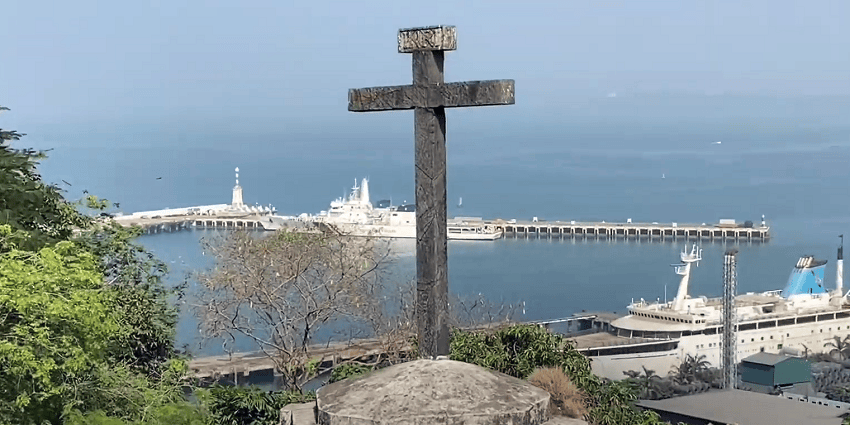
Photo: Nishantadhagale1 / Wikimedia Commons
This massive, historic structure is regarded as one of Goa’s most important coastal forts since it is still intact and proudly stands today. Portuguese ships used to dock at Mormugao. Situated a short distance from the Mormugao port, the fortification is supposed to have been constructed to protect the harbour’s mouth. This fortress was erected in the direction of the Viceroy of the Portuguese State of India, Dom Francisco da Gama, Fourth Count of Vidigueira, during his second reign, for the protection of the South Goa bar, which was the capital of the state at the time. It is currently mainly in ruins but is worth a visit for its historical significance and views of the busy waterfront.
Location: Mormugao
Timings: 9 AM – 5:30 PM
Entry Fee: N/A
9. Anjediva Fort
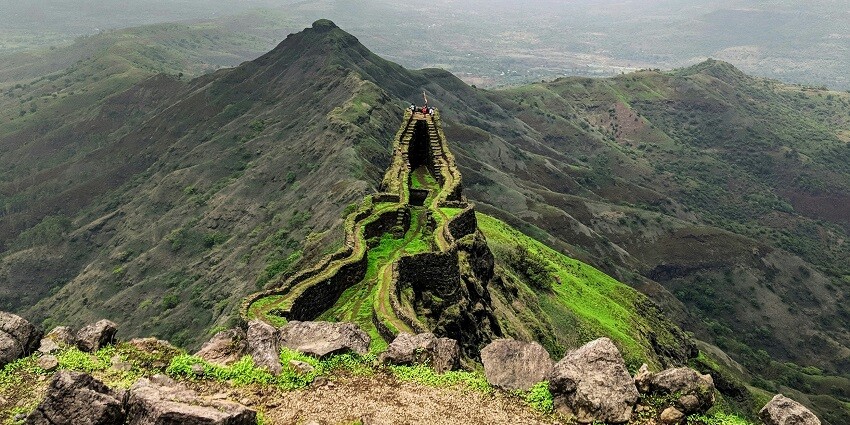
Photo: Vinod Patil / Unsplash / Image For Representation Only
Anjediva Fort, on Anjediva Island, is one of Goa’s oldest forts, dated from 1505. It had a critical role throughout Portuguese colonialism and is surrounded by a rich maritime heritage. Built at a high expense, it was to offer military defence structures to protect Portuguese colonial interests in India. Following the military operation known as “Operation Vijay,” which forced the Portuguese out of their colony in Goa, the island and the fort site were adopted into India in 1961. Excavations in the region have discovered 11th and 12th-century pillars, stones, and pots featuring the creative work of Kadambas and Chalukyas.
Location: Anjediva Island
Timings: 9 AM – 5:30 PM
Entry Fee: N/A
Suggested Read: Mormugao Fort
10. Betul Fort
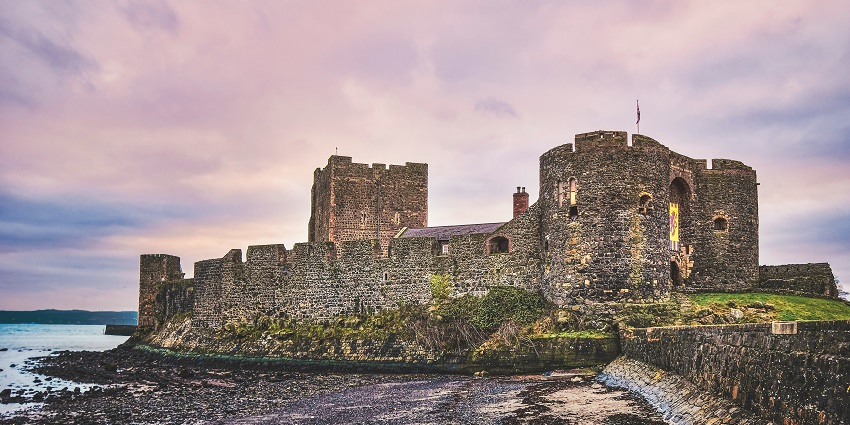
Photo: K. Mitch Hodge / Unsplash / Image For Representation Only
In the South Goa district of Goa, India, the beach village of Betul is situated in the Salcete taluka. It is Salcete’s southernmost settlement and is well-known for its lighthouse, beach, and fort. There was not much information available about Betul Fort before members of the History Lovers Group decided to take up its renovation from the dilapidated state. Standing on the rampart of the fort you get a wide-angle view of the Betul River that flows into the Arabian Sea. It is believed that the Portuguese in 1762 acquired the region by a treaty entered into with the King of Sunda.
Location: Betul Beach
Timings: 9 AM – 6 PM
Entry Fee: N/A
Goa forts have various features where tourists may learn about the state’s history and admire architectural masterpieces. When visiting such sites, individuals can participate in a variety of activities such as photography and walking. Each fort is unique in itself and promises a diverse experience. If you’re planning a trip to Goa, you should check out TripXL and plan for an unforgettable tour.
Cover Photo: Panay J / Unsplash / Image For Representation Only


 WhatsApp
WhatsApp
 Twitter
Twitter









